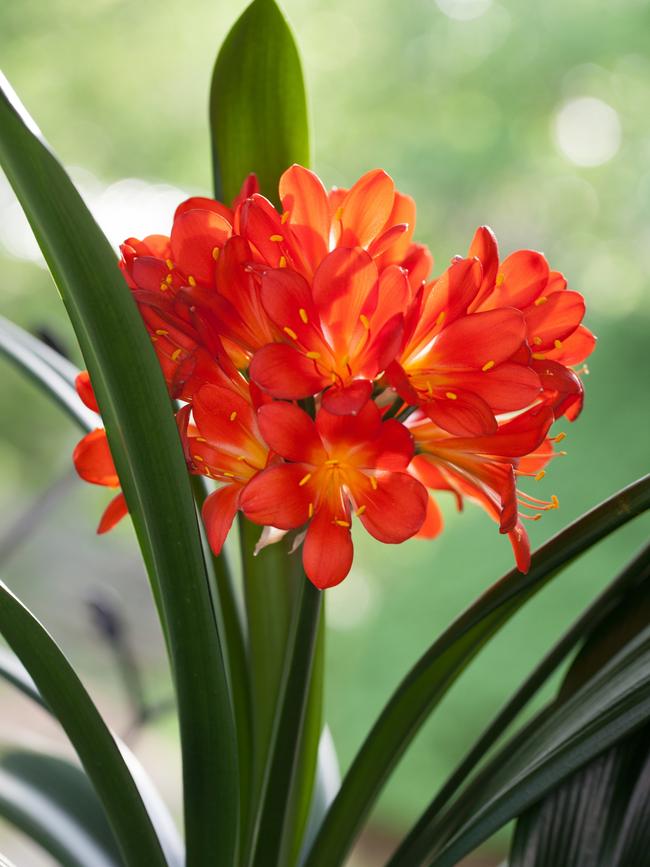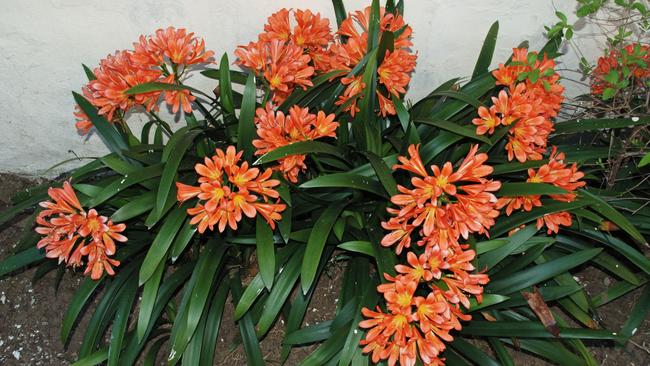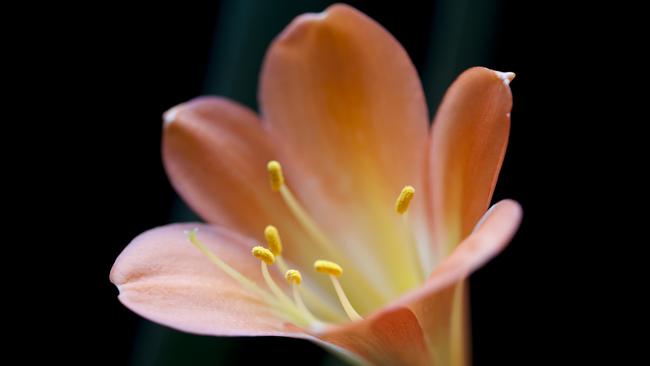Clivia clogs
How smart breeders made a ho-hum plant into a star.

The trouble with clivias, historically, was that their spring flowers only came in orange. While they’re some of the best low maintenance/high impact plants for shade in frost-free climates, orange is just not a popular colour in the garden.
Things started to change about 15 years ago when the first “cream” clivias hit the market. They were eye-wateringly expensive at the time but as stock numbers have increased, prices have dropped; now they cost only about 50 per cent more than common orange ones. Also widely available are the Belgium hybrids, with broader leaves and larger, redder flowers.

Clivia breeders have developed ever more colours and flower forms from the six known species. There are now pink, peach and sunset tones as well as every version of yellow and orange from pastel to bright, even red. Some have green centres, others yellow, and some have multi-coloured blooms. The colour groups called green and bronze (green overlaid with orange) are the latest to be pursued by breeders and collectors. Pure white is the holy grail. Petals are getting larger, blooms more numerous, and even the leaves might be striped. A group called “Twins” produces a pair of flower spikes at the same time.

Keen collector Ken Smith, the international registrar for the Clivia genus, says there are thousands of named varieties. “It’s quite an eye-opener to see the parallel development of clivia breeding in so many countries across the world,” he says. “We’re blessed in Australia to have a climate where you can throw clivias under a tree and they just keep growing. I’ve seen growers in snowy Pennsylvania house their collections in their basements over winter.”
John Craigie of Pine Mountain Nursery in Queensland has been breeding clivias (plus agapanthus and daylilies) for more than 20 years. The former commercial lawyer is all over the technical side of breeding and has grown the business, selling to trade outlets and by mail order. “There’s been a big resurgence in demand in the last year – we can’t keep up at the moment,” he says.

Craigie was one of the first to grow peach clivias in Australia, paying $US20 per seed from South Africa. Flowering plants initially sold for more than $100 each, but he now sells improved peach cultivars and yellows at the same price. Clivias need to produce 12 leaves before they flower, which takes at least three years from seed, if you’re an expert. And that’s for orange clivias – yellows take longer, and some varieties can take eight years. “When you walk through the shade house to see all the new creations coming into flower for the first time each spring you get a real buzz out of it,” he says.
Genetic variability means that seeds don’t necessarily flower the colour you expected. “Seed crosses are like children – they’re all different,” explains Craigie. He has learnt to buy seeds from superior breeders in Japan, South Africa, Europe and the US who keep impeccable records. If you want a particular colour, buy a plant in flower in spring so you know exactly what you’re getting, advises Craigie. Ken Smith suggests that if you’re really keen, make contact with your nearest clivia society. “The world will open up,” he says.
Good to know
Clivias need protection from direct sun and frost Mass plant for best effect, in swathes or as borders. Keep special ones in pots to appreciate them Lift and divide crowded clumps in autumn as a free source of new plants To grow from seed, wait until the berries ripen to full colour, remove outer flesh and press seeds into the surface of a seed raising mix. Keep moist in warm shade
Q&A
Does honey have a healing role in the garden? Would it help repair pest damage to fruit tree trunks? Kate, Adelaide
Honey is an ancient remedy for healing human wounds due to its antiseptic properties. Potency varies widely; the best Manuka honey has significant antibacterial activity and some honeys have antifungal activity. Trees repair wounds by “compartmentalising” or isolating damaged tissues and growing new bark over the damage. Honey’s effect is unknown but proprietary wound-sealing paints can be damaging and are not recommended. Honey does help promote root formation on stem cuttings.
Is there an organic way to remove bamboo that’s spreading beyond metal root barriers? Suzie George, Melbourne
Cutting new shoots off at ground level helps. You can eat bamboo shoots of many varieties, harvested 10-20cm below the surface. However, new shoots will keep developing unless you remove the clump altogether by cutting it down and having the root system ground out. My compost bin is overrun with gnats.
Is it safe to spread on my vegie patch? I’ve read that they eat plant roots. Gus Bravo, Melbourne
The tiny flies of fungus gnats tend to run rather than fly; they are common around damp potting mixes and their larvae do eat root hairs. If that’s your problem, add more dry matter such as dry leaves, paper or vacuum cleaner dust; beneficial nematodes that target fungus gnats are also available. Vinegar flies are more likely; unlike fruit flies they don’t feed on fruit but their fermenting products. These won’t damage plant roots.

Send your questions to: helenyoungtwig@gmail.com or Helen Young, PO Box 3098, Willoughby North, NSW 2068. Website: helenyoung.com.au. The best question for September wins a $120 hamper from Richgro, including Black Marvel Tomato and Vegetable Food, natural insect repellent and their Grow Bag. August’s winner is Jillian Bolger of Geelong for her question about raised vegie beds.




To join the conversation, please log in. Don't have an account? Register
Join the conversation, you are commenting as Logout